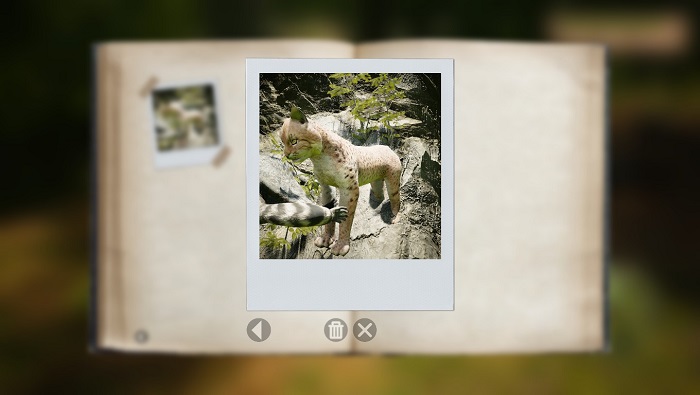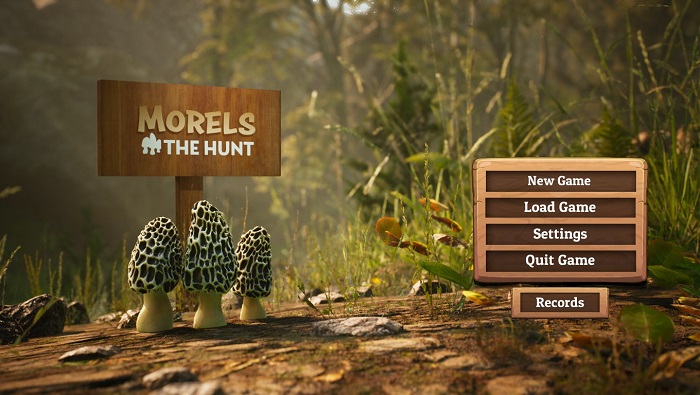Subjective:
Developer and publisher Abrams Studios present Morels: The Hunt for review. Morels: The Hunt (shortened to Morels for the rest of this review) aims to provide a relaxing experience by hunting for delicious mushrooms. Mild survival mechanics keep the game play loop from becoming “click the mushroom” by forcing the player to return home for supplies, either to remove nasty ticks or keep energy up by sheltering the player from rain. New areas may further expand the mushroom hunt and offer plenty of opportunities to get to know the local animal population.
Objective:
Between the gentle plucking banjo and colorful pong mini-game played between two squirrels, Morels states its relaxing and fun intention up front. The player even gets to pick how long they want their in-game days to be so that they can set their own pace for the mushroom hunting and adjacent activities. The survival mechanics can be ignored, mostly, as they interfere with stamina regeneration to varying degrees and keep the player from partaking in the animal photography that earns additional points. Thankfully, you don’t need to be skilled at mushroom acquisition or animal photography to move on to new territory. If you enjoy the game, just keep playing and the new locales will be your’s.

Assessment:
I’m not one to criticize general technical issues when it comes to PC games. They’ve got to play on a number of systems, each with their own specs, and if I’m having trouble I usually chalk it up to something not quite clicking. But Morels, the game about wandering the wilderness looking for mushrooms, has so many distracting graphical flourishes that when my system began chugging it bothered me both on a critical and technical level. Morels has technical polish beyond what you could conceive of finding in nature to the point that it stops being pleasurable to look at with the frame rate chugging alongside it.
Thinking this might have been a “me” issue I went looking for gameplay footage from others. I saw the same lagging and bloom that presents the wilderness as viewed through a chlorine haze. Then there’s the matter of the animals, stiffly animated (if animated at all in spots), providing a rough contrast to the rest of the wilderness.
I write this because, hot darn, is Morels relaxing fun when it works well. It doesn’t ask much from me other than spending time in its wilderness, enjoying the banjo, and building up a small compartment of supplies to keep foraging. Keeping careful tabs on where the biggest population of morels is, along with the various other edible mushrooms, evolves the game play with each new location. I also love that the new areas don’t have to be bought and can be earned at a player-accelerated pace. Just skip days if you’re getting tired of where you are, and the next step of the wilderness will open up.
The survival aspects aren’t well implemented but don’t hinder the experience too much. Once I got all the photographs I needed from an area, I learned to not mind the poison ivy so much (camera shakes from the itchiness so you can’t take photos). The other afflictions and environmental effects were just stamina drains. These could stand a difficulty slider to turn off since they just shorten a day that can already be shortened by choice.

The Review
Morels: The Hunt
I wish that the simplicity of Morels' game play extended to its graphical approach. The loop is gently satisfying and has a steady pace; however, when the bloom is too much or the animals stiffly interact, the luster fades. It's not enough to overwhelm the cheery humility in its basic design, and it remains a good way to spend days when you want to get lost with the tiniest purpose in mind.
PROS
- Jaunty and bright gameplay loop that doesn't ask much from the player, just experience the world and take in its corners.
- Go at your own pace gameplay makes this great for players needing a quick fix.
CONS
- Chugging graphics engine often makes the wilderness look like a cloud of chlorine collided with a slide show.
- Almost a positive, or at least neutral, but the animal models interact with one another and the environment so poorly that the overly elaborate environment could have used some extra love for the animals.



